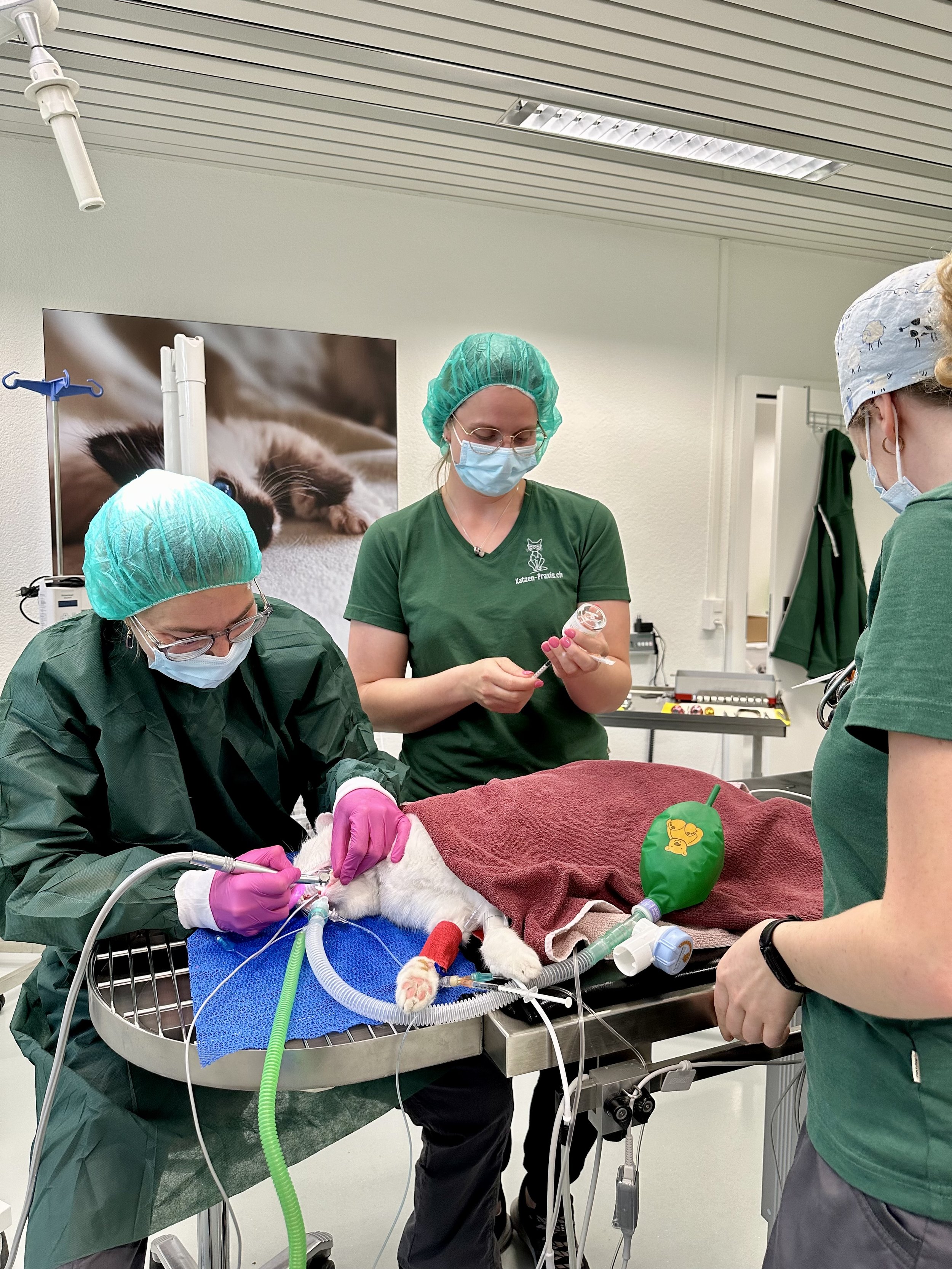Information about dental problems in cats: Resorptive lesions (FORL)
Dental problems are a common but often underestimated health problem in cats. In particular, so-called resorptive lesions, also known as FORL (Feline Odontoclastic Resorptive Lesions), are common and require special attention from cat owners and veterinarians. This information sheet is intended to provide a comprehensive overview of this condition to raise awareness of your cat's dental health.
Historical perspective
Resorptive lesions in cats are not a modern phenomenon. Cat skulls with typical tooth and bone changes were already found in Roman times and in the Middle Ages. It is therefore not primarily a problem of civilization or overbreeding, even if certain breeds such as the Maine Coon are certainly overrepresented.
Frequency and course
It is estimated that 80-90% of cats develop FORL in the course of their lives. The disease sometimes begins immediately after the change of teeth, but can also be observed in old age.
In some cats many teeth are affected, in others only a few.
An affected tooth is often followed by others as the disease progresses.
The exact cause of FORL is still unclear. There are certainly many factors. It is assumed that it is largely an autoimmune disease in which the body's own immune system triggers an inflammation and attacks, breaks down and remodels tooth enamel and roots.
Due to the rapidly reproducing nature of cats, dental pain does not appear to be a relevant selection criterion, which means that these diseases will continue to occur in the cat population.
First signs of resorptive lesions on clinical examination
Recognition of toothache
Cats are masters at hiding pain. Typical signs of toothache can be
- Changed eating behavior (one-sided chewing or refusal to eat)
- Rubbing the cheek after eating
- Drop food
- Chattering teeth
However, cats often seem to behave normally, even when they are suffering from severe toothache. They play, cuddle and eat inconspicuously. It is often only after dental treatment that you realize which behaviours were due to pain. Regular veterinary examinations are therefore essential. It is recommended that cats should be examined by a vet at least once a year from the age of around one year in order to detect dental disease at an early stage.
Dental diseases are not only painful, they also have a negative impact on various organs such as the heart, kidneys, pancreas, etc.
The veterinary examination
A thorough examination of the teeth requires experience. Veterinarians should be familiar with the specific signs of dental disease in cats. In order to keep up to date with the latest knowledge, we are of course members of the European Veterinary Dental Society (EVDS) and take part in the annual congresses.
During the examination, signs such as a slight reddening of the mucous membrane of the mouth or a defensive reaction to pressure on the roots may occur. The cat's stress and anxiety during the examination can make it difficult to recognize pain. Therefore, a calm and relaxing environment in the veterinary practice is crucial.
Only after good dental hygiene (in an anesthetized state), gentle palpation of the tooth edges with a probe, and X-rays and CT images can it be determined whether tooth and root resorptions are actually present.
Dental treatments at Katzen-Praxis.ch
Importance of X-rays and CT in the diagnosis of dental diseases in cats
To fully diagnose and evaluate dental diseases such as feline resorptive lesions (FORL), imaging techniques such as radiographs and CT scans are crucial. Here are some reasons why these examinations are essential:
X-rays make it possible to visualize changes in the jawbone and especially tooth roots that cannot be seen with the naked eye. Resorptive lesions often begin below the tooth surface and can only become visible at later stages.
X-ray examinations allow us to detect horizontal bone loss, especially in the lower jaw, at an early stage.
The condition of the tooth roots can only be correctly assessed by x-rays, which can determine the severity of the disease and help the cat dentist decide whether and how the entire root should be removed.
Significant tooth root changes and resorptive lesion in the area of the tooth neck
ConeBeam CT scans for improved detail accuracy:
Computed tomography (CT) offers even more detailed imaging compared to conventional X-rays, especially in complex areas of the jaw.
3D imaging: CT enables a three-dimensional representation of the tooth anatomy, which is very helpful for diagnosis and preparation for surgery. We can also see lateral bone loss here.
Differentiation of healthy versus diseased bone: here we can see, for example, dissolutions of the bone around the root tips (lyses), the roots of the upper jaw can also be better visualized than with conventional X-rays and we can assess the stability of the lower jaw.
CT image with good visualization of bone resorption, which ultimately leads to painful exposure of the roots
By using these imaging techniques, veterinary practices can ensure that dental disease is treated early and effectively, helping to improve your cat's quality of life. If necessary, targeted surgical intervention can be better planned, resulting in a higher success rate and a better prognosis for the cat.
Unfortunately, the affected teeth cannot be repaired, they can only be removed. Fortunately, however, our success rates are very high, with 99% of cats showing no more inflammation or pain after a tooth extraction at this site.
Prevent:
Unfortunately, as far as we know today, there is little effective prophylaxis. Feligum Gingiva can reduce the inflammation of the gums somewhat, PlaqueOff can reduce the formation of tartar, and dental hygiene can also help to slow down the inflammation. Brushing your teeth every day at home would be nice but is usually unrealistic. These measures buy you some time but cannot completely prevent resorptive lesions.
Conclusion
Dental health is essential for the well-being of our cats. As a responsible cat owner, you can make a significant contribution to the early detection and treatment of dental disease by incorporating regular veterinary check-ups into your routine. By paying close attention to changes in your cat's behavior or eating habits, you can provide valuable clues to possible dental problems.
Your cat's health is important to us - together we can ensure that it lives a long, pain-free life!
Please do not hesitate to contact us for further information!




